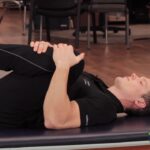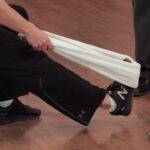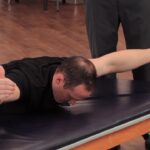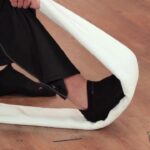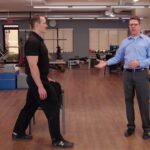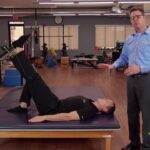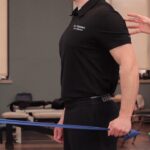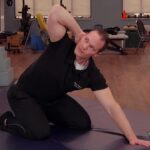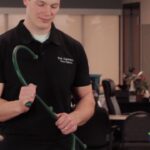Pelvic Tilt | Early Intervention Ergonomics
What is the Pelvic Tilt exercise?
The pelvic tilt exercise is a simple and effective exercise that targets the muscles in the lower back and the core. It helps to improve posture, strengthen the abdominal muscles, and stabilize the pelvis. Here’s how you can perform the pelvic tilt exercise:
- Lie on your back on a mat or a comfortable surface with your knees bent and feet flat on the floor, hip-width apart. Keep your arms relaxed at your sides.
- Take a deep breath in and, as you exhale, gently press your lower back into the floor, tilting your pelvis backward. Imagine flattening your lower back against the mat.
- Hold this position for a few seconds while maintaining a relaxed breathing pattern. Focus on engaging your abdominal muscles during the hold.
- Slowly release the tilt and return to the starting position.
- Repeat the exercise for a desired number of repetitions.
It’s important to note that the pelvic tilt exercise should be performed with control and without straining. Avoid excessive arching of the back or lifting the hips off the floor. Start with a few repetitions and gradually increase as your strength improves. If you have any underlying medical conditions or concerns, it’s always a good idea to consult with a healthcare professional before starting a new exercise routine.
Early Intervention Benefits
Performing the pelvic tilt exercise can also be beneficial in reducing work-related injuries. Here are some early intervention benefits of this exercise:
- Core Stability for Heavy Lifting: Many work environments involve lifting, carrying, or moving heavy objects, which can put strain on the lower back. The pelvic tilt exercise strengthens the core muscles, including the deep abdominal muscles, providing stability and support during lifting tasks. This can help reduce the risk of lower back injuries and strains.
- Improved Posture during Desk Work: For individuals who spend long hours sitting at a desk, maintaining proper posture is crucial in preventing work-related injuries such as back pain, neck strain, and postural imbalances. Regularly practicing pelvic tilts can help improve posture by promoting a neutral pelvis position, reducing the likelihood of slouching and related issues.
- Reduced Risk of Musculoskeletal Disorders: Work-related musculoskeletal disorders (MSDs) are common among individuals who perform repetitive tasks or have poor ergonomics at their workplace. The pelvic tilt exercise enhances body awareness and encourages proper alignment of the spine, reducing the strain on muscles, joints, and ligaments. This can help mitigate the risk of MSDs such as lower back pain, hip discomfort, and muscle imbalances.
- Increased Body Mechanics Awareness: By engaging the core muscles and focusing on proper pelvic alignment, the pelvic tilt exercise promotes body mechanics awareness. This heightened awareness can translate into improved movement patterns and mechanics during work activities, reducing the risk of acute injuries and chronic strain on the body.
- Injury Rehabilitation and Prevention: For individuals recovering from work-related injuries or looking to prevent them, the pelvic tilt exercise can be part of a comprehensive rehabilitation or prehabilitation program. It gently activates the core muscles, aids in recovery, and promotes stability and strength in the lower back, reducing the chances of reinjury or further strain.
Things to Remember
It’s important to note that while the pelvic tilt exercise can be beneficial for reducing work-related injuries, it is advisable to consider other ergonomic factors. For example, using proper lifting techniques, adjusting workstations, and incorporating regular breaks and stretching routines into your daily work routine. Contact us here at Peak Ergonomics for more information and further assistance in reducing work-related injuries.

These early intervention exercises are to improve overall health & fitness and help reduce work-related injuries.
If you have an injury or illness, consult with a health care professional before attempting.



